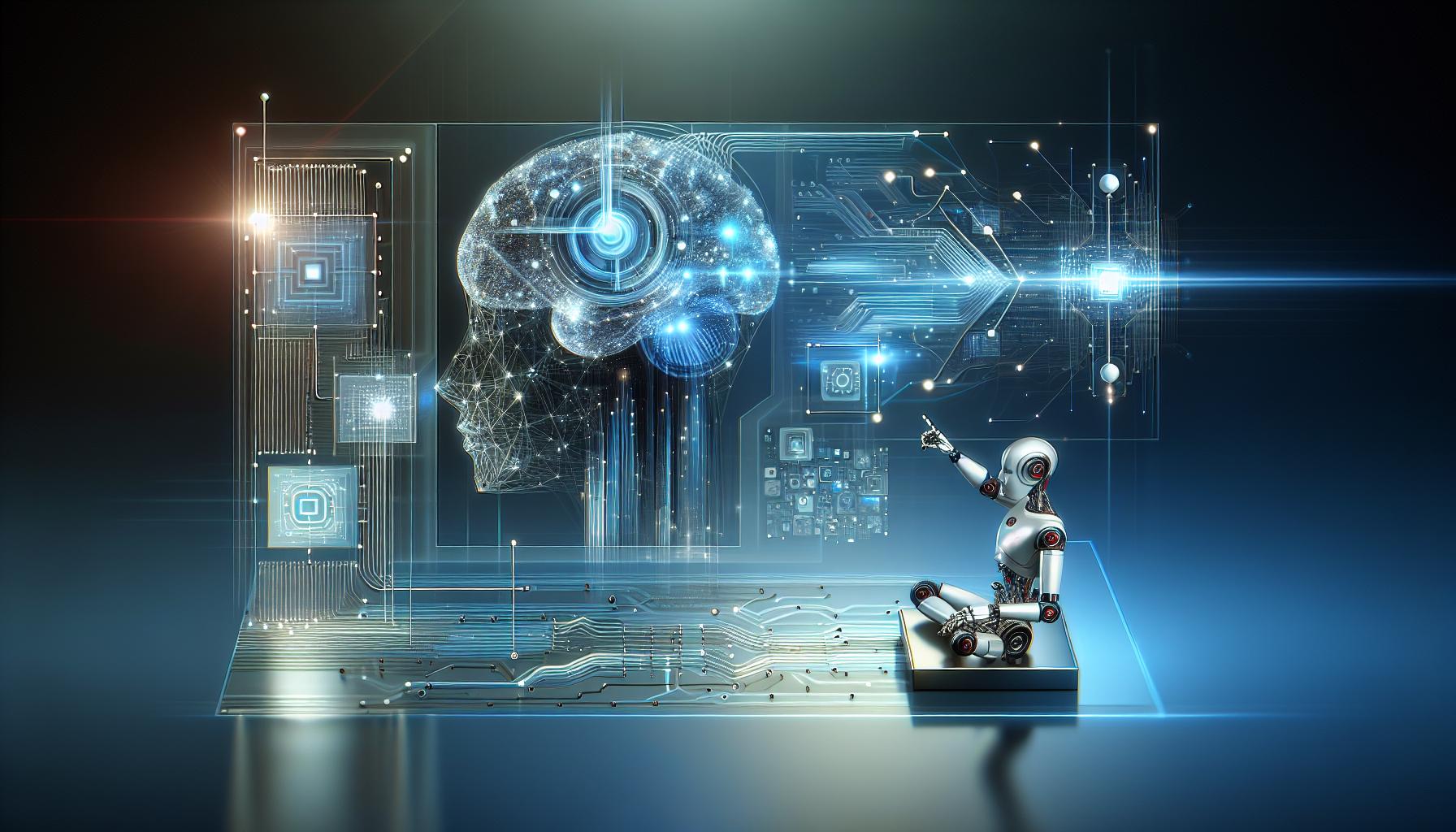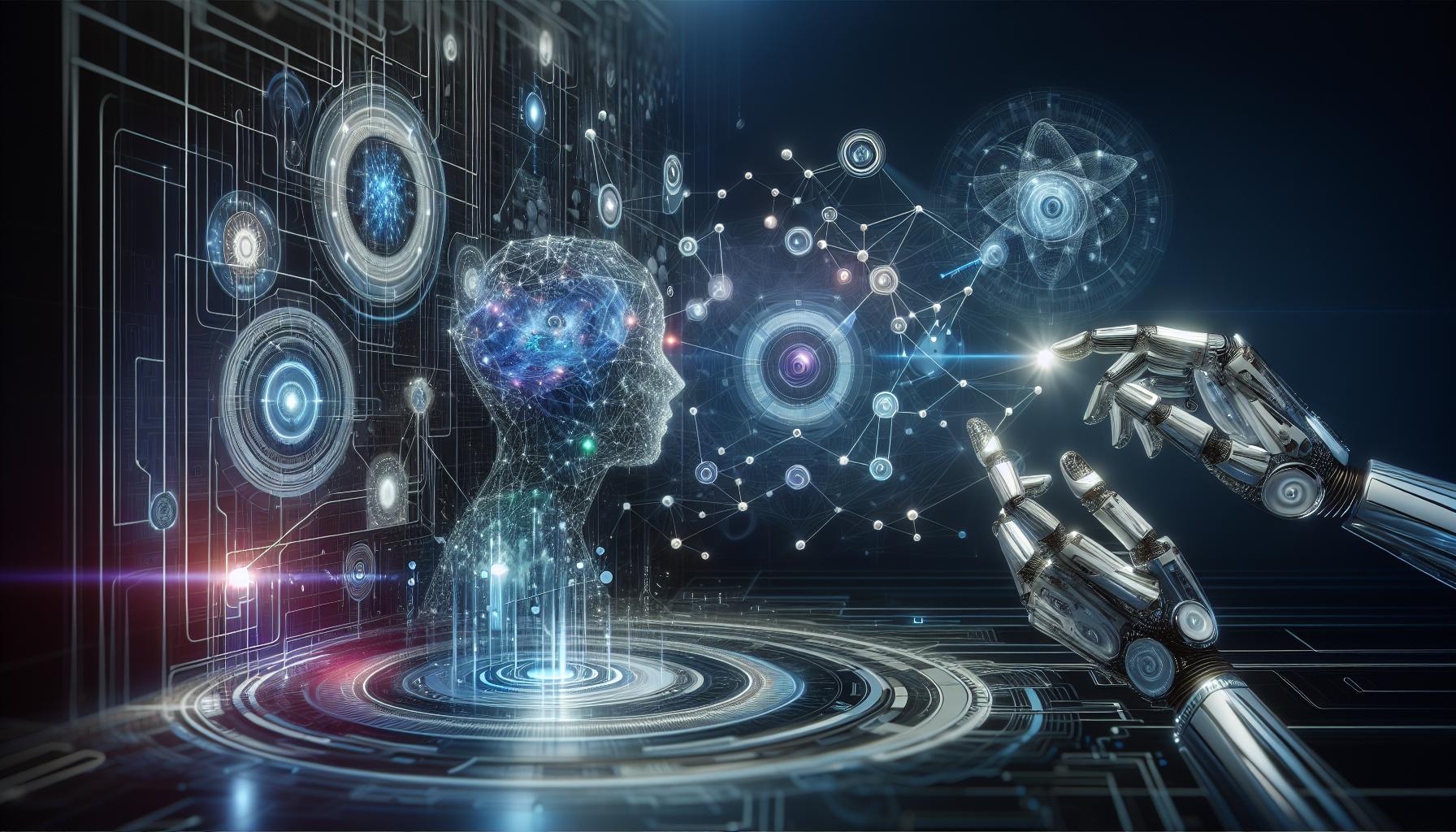Are you frustrated with your Character AI not working as expected? Many users encounter common issues that can hinder their experience. Understanding these challenges is crucial for maximizing the potential of AI-driven characters in your projects. This guide outlines effective solutions to enhance performance and make your interactions seamless.
Understanding the Basics of Character AI: What You Need to Know
Character AI is an innovative tool that allows users to engage in dynamic dialogues with artificial characters across various scenarios. However, many users face challenges that hinder their experience. Understanding the basics of this platform can greatly enhance your interaction and help resolve frequent issues. Dive into the essentials of Character AI to maximize your creative potential and enjoy seamless conversations.
Here are some common concerns that users encounter and practical solutions to enhance your experience:
The Importance of Platform Compatibility
Character AI operates on web-based technology, which means your browser choice can significantly affect performance. Ensure you are using updated browsers like Chrome or Firefox for optimal compatibility. An outdated browser may lead to slow loading times or failure to execute features properly.
Internet Connection Stability
A stable internet connection is crucial when using Character AI. Frequent disconnections can result in incomplete data transmission, causing glitches or crashes during conversations. To improve your connection:
- Use a wired connection if possible.
- Limit bandwidth usage by closing unnecessary applications.
- Reset your router to clear potential issues.
Managing Privacy Settings
Privacy settings on your browser can interfere with Character AI’s functionality. Be sure to check that cookies and third-party cookies are enabled, as they are essential for maintaining session information. Adjust these settings as follows:
- Navigate to your browser settings.
- Find the privacy or security section.
- Allow cookies, especially for the Character AI website.
Contacting Support for Persistent Issues
If you’re still facing challenges despite addressing common issues, consider reaching out to Character AI’s support. They can provide targeted assistance for issues such as account access problems or features not working as intended. Documenting your issues, including error messages, will facilitate faster resolutions.
By understanding these foundational elements, you can navigate Character AI more effectively and troubleshoot common roadblocks. This approach not only alleviates frustration but also enriches your overall engagement with the platform.
Common Issues That Prevent Character AI from Functioning Properly
In today’s fast-paced digital world, the allure of artificial intelligence, particularly character AI, captures the imagination of many. However, users often find themselves asking, “Why won’t Character AI work?” Understanding the common issues that can impede its performance is crucial for both novice and seasoned users. Tackling these problems head-on not only enhances user experience but also optimizes the AI’s functionalities for desired outcomes.
Technical Glitches
One of the foremost reasons Character AI may falter is due to technical glitches. These can range from temporary server downtime to more persistent bugs in the software. Users might experience unexpected crashes or delays in response time, which can hinder effective interactions. Here’s a brief rundown of potential technical issues:
- Server Overload: High traffic volumes can cause the servers to become sluggish, impacting performance.
- Software Bugs: Unsuspected bugs in the code can lead to erratic behavior from the AI character.
- Compatibility Issues: Ensuring that the software is up to date with system requirements is crucial.
When faced with technical challenges, users should first check the official website or forums for ongoing maintenance updates and troubleshooting tips.
Configuration Problems
Another critical area to explore when questioning the functionality of Character AI is configuration problems. Many users overlook the settings that can significantly affect performance. Common configuration issues include:
- Incorrect Setup: Failing to properly configure the character settings may lead to suboptimal responses.
- Outdated Software: Not updating to the latest version can result in missing out on new features or fixes.
- Network Issues: A poor internet connection can severely impact interaction quality and speed.
Regularly reviewing and updating settings can prevent many of these headaches. Additionally, consulting application manuals or seeking help from user communities can provide insights into optimizing configurations.
User Error
Ironically, one of the simplest yet most frustrating aspects of character AI malfunctioning stems from user error. Many users unknowingly set themselves up for disappointment through misunderstandings about the AI’s capabilities. Here’s what to keep in mind:
- Unrealistic Expectations: Expecting human-like interactions can lead to frustration when the AI doesn’t meet these standards.
- Poor Interaction Practices: Not utilizing the intended prompts or structures can lead to nonsensical replies.
- Neglecting Guidelines: Ignoring provided user guidelines can result in limited interactions with the character.
To enhance your experience, it is advisable to familiarize yourself with the software’s user manual and test various prompts to gauge the AI’s responsiveness.
By addressing these common issues, users can engage more effectively with Character AI, turning what might seem like a simple technology failure into a robust, enriching experience. Understanding why the AI may not be functioning properly is the first step toward finding satisfying solutions and enjoying all that character AI has to offer.
Troubleshooting Guide: Step-by-Step Solutions to Character AI Problems
Encountering issues with Character AI can be frustrating, especially when you rely on it for creative tasks or engaging conversations. Fortunately, many common problems have straightforward solutions that can get you back on track. Whether you’re facing technical glitches, troubles with connectivity, or confounding performance issues, this troubleshooting guide provides clear, step-by-step solutions to help you resolve them effectively.
Connectivity and Network Issues
One of the primary reasons users encounter difficulties with Character AI is related to internet connectivity. To ensure a seamless experience, follow these tips:
- Check Your Internet Connection: Confirm that your device is connected to the internet. You might do this by opening other websites or applications to see if they function properly.
- Restart Your Router: Sometimes, a simple restart can resolve connectivity issues. Unplug your router, wait a minute, and then plug it back in.
- Use a Wired Connection: If you are relying on Wi-Fi, try connecting your device directly to the router with an Ethernet cable for a more stable connection.
Browser-Specific Solutions
The browser you use can significantly impact how Character AI operates. Here are actionable steps to troubleshoot browser-related issues:
- Clear Browser Cache: Old data can interfere with website performance. Clear your cache by navigating to your browser’s settings and selecting the option to clear browsing data.
- Update Your Browser: Ensure your web browser is up to date, as outdated versions can lead to compatibility issues.
- Disable Extensions: Some browser extensions may conflict with Character AI. Try disabling them temporarily to see if performance improves.
Account and Access Issues
If you find yourself unable to log in or access certain features, follow these practices to regain access:
- Reset Your Password: It’s not uncommon to forget passwords. Use the “Forgot Password?” feature to reset yours.
- Check Service Status: Occasionally, platforms experience downtime. Visit the official Character AI status page to check for any reported issues.
- Contact Support: If you’ve tried everything and still cannot access your account, reach out to customer service for assistance.
Performance Issues
Poor performance or lagging responses from Character AI can detract from the user experience. To improve performance, consider the following:
- Limit Concurrent Tasks: Reducing the number of active applications or tabs can free up system resources.
- Device Maintenance: Regularly updating your device’s software and clearing out unused applications can enhance performance.
- Try Another Device: If possible, switch to another device to see if the issue persists, which can help determine if the problem is hardware-related.
| Problem | Possible Solution |
|---|---|
| Can’t Connect | Check your internet and restart your router. |
| Page Not Loading | Clear cache and update your browser. |
| Login Issues | Reset password and contact support if needed. |
| Slow Performance | Limit concurrent tasks and optimize device performance. |
By following these steps, you can troubleshoot many of the common issues that might make you wonder, “Why won’t Character AI work?” Tackle problems methodically to restore functionality and enhance your overall experience with the platform.
Enhancing Your Character AI Experience: Tips and Best Practices
Character AI has the potential to create immersive, dynamic experiences, but sometimes users run into challenges that can diminish their enjoyment. Understanding how to enhance your interaction with character AI can significantly impact your experience and mitigate common issues. By employing a mix of savvy strategies and best practices, you can engage more effectively and unlock the full potential of these creative tools.
Fine-tuning Your Approach
One key to maximizing your enjoyment with character AI lies in adjusting your interaction style. Try these approaches to create a more engaging dialogue:
- Conversational Clarity: Be as clear and specific in your prompts as possible. Instead of vague queries, frame your requests with detailed context to help the AI understand your needs better.
- Experiment with Tone: Play with different tones or moods in your interactions. If something isn’t working, try a more formal or casual vibe, or even use humor to see how the AI responds.
- Provide Feedback: If your character AI is less responsive than expected, guide it by providing direct feedback. Reinforcing what worked can lead to more fruitful outcomes in future interactions.
Utilizing Advanced Features
Many character AI platforms come with advanced features that can enhance your experience. Taking advantage of these can lead to smoother interactions:
- Customization Options: Dive into settings that allow you to customize character backgrounds or capabilities, tailoring their personalities or areas of expertise to your preferences.
- Role-Playing Scenarios: Create specific role-playing situations. This not only sets the stage for enthusiastic responses but also allows the AI to react in a more contextually rich manner, improving overall satisfaction.
- Predefined Prompts: Many platforms offer libraries of prompts or templates. Use these as starting points, which can inspire your interactions and help you overcome creative blocks.
Staying Updated with Changes
The digital landscape is constantly evolving, and so is character AI technology. Regular updates can introduce new features and fixes that improve performance. To stay ahead, consider these tips:
- Follow Official Channels: Keep an eye on the official blogs, forums, or social media channels for your character AI platform. Here, you may find the latest news on updates and enhancements that may affect your experience.
- Engage with the Community: Participate in online forums or community groups where you can share experiences and learn from others’ interactions. This sharing of knowledge often leads to discovering hidden features or troubleshooting tricks.
By implementing these strategies, you can ensure a more rewarding experience when engaging with character AI. Not only will these tips help to navigate common problems, but they also foster more creative and fulfilling interactions.
Integrating Character AI with Other Technologies for Better Performance
The future of interactive storytelling and gaming is rapidly approaching, and one of the key players in this revolution is Character AI. Combining cutting-edge AI technology with rich character development can create compelling narratives and experiences. However, to fully realize the potential of Character AI, it’s crucial to understand how it can synergize with other technologies. By doing so, developers can tackle common issues and create engaging applications that keep users captivated.
Enhancing Character Interactivity with VR and AR
Integrating Character AI with Virtual Reality (VR) and Augmented Reality (AR) can elevate user experiences to new heights. Imagine stepping into a fully immersive environment where AI-driven characters interact with users in real time, responding to verbal cues and actions. This integration solves common problems related to user engagement and immersion. For example, in a VR gaming scenario, an NPC (Non-Playable Character) powered by Character AI can adapt its personality and dialogue based on the player’s behavior, providing a richer narrative arc.
- Real-time Feedback: Characters can recognize user emotions through VR hardware, allowing for spontaneous dialogue adjustments.
- Dynamic Storylines: The AI could alter plot lines based on user choices, creating unique gameplay experiences for each player.
Leveraging IoT for Enhanced Personalization
The Internet of Things (IoT) can also play a pivotal role in enhancing Character AI performance. By collecting data from various devices, AI characters could gain insights into user preferences, habits, and even physical environments. This technology can help resolve performance issues related to user interaction, as characters will become more intuitive.
| Technology | Integration Benefits |
|---|---|
| VR | Immersive environment and real-time reaction to user actions |
| AR | Interactive overlay for real-world experience |
| IoT | Enhanced personalization through data collection and analysis |
When Iron Man interacted with his AI assistant, J.A.R.V.I.S., viewers were captivated not only by the character’s intelligence but also by how seamlessly it interacted with its environment. Character AI can emulate this kind of personalized and contextual interaction by leveraging IoT data—transforming the engagement process and mitigating common issues related to stale content.
In summary, integrating Character AI with VR, AR, and IoT not only addresses prevalent questions regarding functionality issues but also paves the way for groundbreaking user experiences. This synergy fosters a more adaptive, personalized interaction, ensuring that users remain engaged and motivated to explore the experiences offered.
The Role of Training Data in Character AI Functionality
The effectiveness of character AI hinges significantly on the quality and scope of its training data. Just like a chef relies on fresh ingredients to create a delectable dish, an AI model builds its understanding and functionality based on the information it has been trained on. In the case of character AI, this means that without robust and diverse datasets, the performance, responsiveness, and realism of the AI will falter, leading to common errors in judgment and understanding.
Importance of Diverse Training Data
Training data serves as the foundational layer upon which character AI develops its responses and interactions. A narrow dataset may lead to a character AI that is predictable and lacks depth, unable to handle nuanced conversations or understand context effectively. Some key aspects of training data include:
- Variety: A mixture of text sources—books, dialogues, online chats—ensures that the AI is exposed to various expressions and styles of language.
- Quality: Well-curated data that reflects accurate information and diverse viewpoints helps in reducing biases.
- Relevance: Context-specific data allows the AI to perform well within particular domains or scenarios, making it more relatable and appropriate in its responses.
Real-World Example
Consider a character AI programmed for customer service. If trained solely on formal business communication yet tasked with engaging a younger audience on social media, it may struggle awkwardly to adapt its tone and style. In this situation, the AI might provide automated responses that lack warmth or familiarity, thereby frustrating users and offering a subpar experience. This mismatch is a direct outcome of inadequate training data that fails to encompass the necessary conversational styles and expectations of that environment.
Addressing Common Problems
To mitigate shortcomings in character AI, one can take several actionable steps regarding the training data:
- Expand Datasets: Regularly update the training datasets to include contemporary language usage and emerging dialogue trends.
- Incorporate Feedback: Use interaction data and user feedback to refine the AI’s understanding of context, thereby improving its ability to address specific queries accurately.
- Utilize Transfer Learning: Consider pre-trained models that can be fine-tuned with specific datasets related to the character’s context for better performance.
By understanding the direct correlation between training data and character AI performance, developers and users alike can strategically enhance their AI systems, making them more effective and engaging. The goal is to create a character that resonates well with users, free from the pitfalls described in “Why Won’t Character AI Work? Solutions to Common Problems.”
User Input and Engagement: How They Affect Character AI Responses
The interaction between users and character AI plays a pivotal role in determining the quality of responses generated by these digital entities. The success of an AI system isn’t solely reliant on its programming or the complexity of its algorithms but significantly hinges on how users engage with it. When users understand how to communicate effectively with character AI, the output becomes more relevant, and the experience becomes increasingly immersive.
Understanding User Input
User input comes in various forms, including textual prompts, questions, and even non-verbal cues in more advanced setups. Each type of input influences how the AI interprets context and generates responses. For instance, straightforward and clear prompts tend to yield more accurate results. To maximize AI effectiveness, consider these tips:
- Be Clear and Specific: Instead of vague references, provide details. For example, instead of asking, “Tell me about history,” frame it as, “What were the major events during the American Civil War?”
- Use Natural Language: Speak to character AI in a conversational tone. Natural phrasing can lead to more coherent and engaging interactions.
- Provide Context: If the conversation involves ongoing themes or storylines, remind the AI of previous discussions to maintain continuity.
Engagement Techniques
The way users engage with artificial intelligence dramatically affects the dialogue flow. Engaging effectively can result in richer responses and a more customized experience. Here are actionable strategies to enhance user engagement:
- Ask Open-Ended Questions: These stimulate dialogue and provide the AI with more room to elaborate, enhancing the depth of the interaction.
- Utilize Feedback: If the AI response misses the mark, don’t hesitate to give feedback. This can guide the AI to adjust and better understand your preferences.
- Create a Routine: Regular interaction can help the AI learn your preferences over time, tailoring its responses accordingly.
Influences of Engagement on AI Learning
Different engagement levels can significantly impact how character AI learns and improves over time. The quality and quantity of user interactions feed into the AI’s learning algorithms, allowing it to refine its responses. A user who consistently provides feedback contributes positively to the AI’s training, while sporadic or unclear input might leave the AI struggling to identify patterns.
To systematically analyze this, consider the following:
| User Behavior | Impact on AI Performance |
|---|---|
| Consistent feedback | Improves accuracy in future interactions |
| Inconsistent prompts | Leads to confusion and irrelevant responses |
| Detailed context | Enhances relevance and depth of dialogue |
Optimizing user input and engagement strategies can dramatically enhance the functioning of character AI, making it a much more effective tool for diverse applications, whether for entertainment, education, or creative storytelling. Understanding the freelance relationship between user interaction and AI response will pave the way for a richer, more satisfying AI experience.
Exploring the Future of Character AI: Challenges and Innovations
As artificial intelligence continues to evolve, innovative applications such as character AI increasingly captivate users with their potential for immersive interaction. However, the journey toward widespread adoption of these technologies is fraught with several challenges that developers and users must navigate. Addressing the issues outlined in “Why Won’t Character AI Work? Solutions to Common Problems” can help us understand the hurdles that currently impede the progress of character AI and explore the promising innovations on the horizon.
One of the most pressing challenges is the delicate balance between user creativity and the inherent limitations of AI programming. Character AI systems often struggle to interpret nuanced prompts or complex role-playing scenarios, leading to responses that fall short of user expectations. To combat this issue, developers are increasingly focusing on advanced natural language processing (NLP) and machine learning techniques. These innovations allow AI to learn from user interactions, leading to a more adaptive approach that can handle diverse scenarios more effectively. For instance, incorporating reinforcement learning models can help AI systems refine their responses based on user feedback, enhancing overall user satisfaction.
Another significant barrier is the ethical and safety concerns surrounding AI interactions. Users often seek spaces where they can explore creative storytelling and role-playing without facing restrictive filters that limit the depth of their experiences. As highlighted in various discussions, such as the challenges detailed in “Why Won’t Character AI Work? Solutions to Common Problems,” platforms must find ways to implement effective moderation without stifling user engagement. This requires innovative solutions such as community-driven content guidelines and sophisticated filtering algorithms that respect user freedoms while maintaining safety.
To highlight the advancements being made, consider the recent trends toward personalized AI experiences. Developers are now looking into creating customizable characters that adapt not just to user inputs but also to individual user preferences over time. This personalized interaction paves the way for deeper connections and more engaging narratives. By addressing both the technical and ethical challenges, the future of character AI appears bright, signaling the potential for richer, more satisfying interactions in role-playing environments.
In conclusion, while the journey of character AI is dotted with significant obstacles as discussed in “Why Won’t Character AI Work? Solutions to Common Problems,” ongoing innovations and thoughtful solutions promise to pave the way for a more robust and enjoyable user experience. The blend of cutting-edge technology with ethical considerations is essential to unlocking the full potential of character AI, ensuring it evolves into a tool that enhances creativity and engagement.
Frequently asked questions
Why won’t Character AI work on my device?
If Character AI is not working on your device, it may be due to compatibility issues, outdated software, or browser settings. Ensure that your device meets the necessary requirements and that your browser is up-to-date.
Sometimes, enabling certain browser features or disabling extensions can resolve performance issues. For example, check if JavaScript is enabled and consider clearing your browser’s cache. If problems persist, you can explore more about device compatibility in the official documentation.
What should I do if Character AI doesn’t respond?
If Character AI isn’t responding, the issue could stem from server downtime or connection problems. To troubleshoot, first check your internet connection. Ensure that you are connected and that other websites load properly.
You might also want to refresh the page or restart the application. If the service is down, you can stay updated by visiting their community forums for real-time issue reports.
Why does Character AI return irrelevant responses?
Character AI may return irrelevant responses due to misunderstandings of your input or limitations in the AI’s training data. These AIs are designed to simulate conversation, but they can get confused by ambiguous queries.
To improve accuracy, try rephrasing your question or providing more context. Engaging with well-defined prompts can lead to better interaction quality. Explore tips for effective communication with AI chatbots on our related articles.
Can I create my own character if Character AI is not functioning?
Even if Character AI isn’t functioning properly, you can still create your own character once the system is online again. The character creation feature is designed to allow you to build personas that can interact based on your preferences.
Make sure to save your progress frequently and check for updates, as the ability to build unique characters enhances your overall experience. You can find valuable guidance in our tutorial section.
Why does Character AI sometimes give a slow response time?
Slower response times in Character AI can occur when the server is overloaded or under maintenance. User demand can significantly impact the speed of interactions, especially during peak hours.
If you experience slow responses, try accessing the service during off-peak hours or refreshing your connection. Staying informed about server status can help you plan your access better.
How can I fix login issues with Character AI?
If you’re having trouble logging into Character AI, ensure that your credentials are correct and try resetting your password if needed. Login issues can often stem from expired sessions or incorrect details.
Additionally, ensure that you are not experiencing internet connectivity issues, and check that your browser settings don’t block cookies, which can affect the login process.
What to do if Character AI isn’t loading?
If Character AI is not loading, the problem might be related to your internet connection or server issues. First, verify your connection and consider trying a different browser or device.
You could also check Character AI’s social media channels for any announcements regarding current outages or maintenance. Being proactive about such issues can save you time and frustration.
To Wrap It Up
In summary, while Character AI can sometimes present challenges, understanding common issues is the first step towards solutions. From connectivity problems to configuration settings, identifying the root cause can often lead to effective fixes. Remember, engaging with AI is a learning process, and every challenge presents an opportunity to deepen your understanding. We encourage you to explore additional resources, connect with communities, and experiment with the tools at your disposal. The world of AI is continually evolving, and your curiosity is key to unlocking its potential. Keep learning, stay informed, and don’t hesitate to reach out if you encounter further obstacles—there’s a wealth of knowledge ready to support you on this journey.





